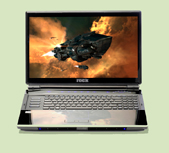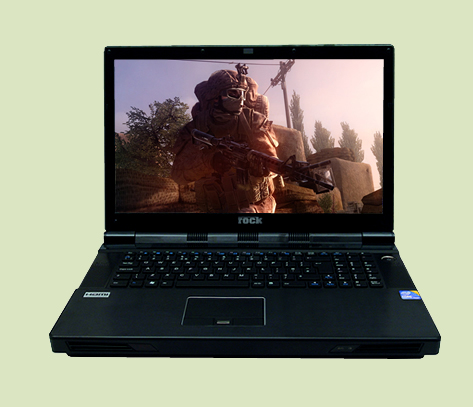Support / Jargon Buster M - O
A - C |
D - F |
G - I |
J - L |
M - O |
P - R |
S - U |
V - X |
Y - Z
Mb: A megabyte is 1024 kilobytes.
MHz: MegaHertz. The speed, or clock rate, that a processor runs at. One Hertz is one pulse per second so 1 MHz is a million pulses per second. If you double the clock rate then you effectively double the speed of the processor – but notice that other components of the machine, disk drives and the like, will not work any faster.
MICROSOFT: Microsoft developed an operating system called MS-DOS. Their operating systems have improved and become more user friendly every time a new edition is released. The current edition is Windows XP, available in home and professional versions. Previous operating systems include DOS, Windows 3.x, Windows 95, Windows NT4.0, Windows 98 and Windows 2000. Microsoft operating systems are the most popular worldwide, thus making Microsoft the largest software company in the world.
MMO: Intel’s Mobile Module, a single chip containing a processor, chipset, cache and other electrical circuitry, allows a notebook to be upgradeable to a faster processor by simply changing modules. This ensures future proofing against advances in technology.
MMX: MULTIMEDIA EXTENSIONS. This is a series of 57 CPU instructions designed to enhance multimedia software. It has been designed by Intel and is available on Intel Pentium MMX processors. An enhancement to improve graphical capabilities of Pentium-based computers. Additional instructions allow streamlining of repetitive program operations, particularly those involving the manipulation of pixels.
MODEM: MODULATE DEMODULATE. This is a device, which allows a computer to connect to another computer via a telephone line. Modems are either internal (on the motherboard) or PCMCIA cards (fit into the PCMCIA slot). Modem speeds are measured in BPS (bits per second), the higher the bps the faster the modem. These speeds range from as low as 300BPS to 56,600 BPS. Modern modems nearly all run at 56,600 bps. Modems can also be used to send and receive faxes, used as answer machines or as a hands free phone, providing you have a microphone and speakers.
MONITOR PORT: A socket at the back of the notebook that can be used to connect an external monitor.
MOTHERBOARD: Also known as the mainboard or the system board. The motherboard is the main circuit board in a PC to which all other components connect. The CPU and memory usually connect directly to the motherboard. The graphics, sound and PCMCIA chips are all mounted on the motherboard. The hard drive and floppy drive connectors, parallel and serial ports, PS/2 ports USB and more recently IEEE 1394 are all built onto the motherboard.
MPEG Software: The MPEG standards are an evolving set of standards for video and audio compression developed by the Moving Picture Experts Group (MPEG).
MPEG-1 was designed for coding progressive video at a transmission rate of about 1.5 million bits per second. It was designed specifically for Video-CD and CD-i media. MPEG-1 audio layer-3 (MP3) has also evolved from early MPEG work.
MPEG-2 was designed for coding interlaced images at transmission rates above 4 million bits per second. MPEG-2 is used for digital TV broadcast and DVD. An MPEG-2 player can handle MPEG-1 data as well.
A proposed MPEG-3 standard, intended for High Definition TV (HDTV), was merged with the MPEG-2 standard when it became apparent that the MPEG-2 standard met the HDTV requirements. An MPEG-4 standard is in the final stages of development and release. It is a much more ambitious standard and addresses speech and video synthesis, fractal geometry, computer visualisation, and an artificial intelligence (AI) approach to reconstructing images. An MPEG-7 is being discussed.
MPEG-1 and -2 define techniques for compressing digital video by factors varying from 25:1 to 50:1. The compression is achieved using five different compression techniques:
The use of a frequency-based transform called Discrete Cosine Transform (DCT).
Quantization, a technique for losing selective information (sometimes known as lossy compression) that can be acceptably lost from visual information.
.Huffman coding, a technique of lossless compression that uses code tables based on statistics about the encoded data.
.Motion compensated predictive coding, in which the differences in what has changed between an image and its preceding image are calculated and only the differences are encoded.
.Bi-directional prediction, in which some images are predicted from the pictures immediately preceding and following the image.
(The first three techniques are also used in JPEG file compression.)
MSCDEX.EXE: The file used by DOS and Windows to assign a drive letter to the CD-ROM. This program (usually in the Autoexec.bat) requires the device driver for the CD-ROM to be presenting the Config.sys.
NDIS: the Network Device Driver Specification is the developed by Microsoft and 3COM
NETBIOS: File and printer sharing protocol for networks.
NETBUI: the NetBIOS Extended User Interface is an enhanced version of NetBIOS
NETWORK CARD: See Ethernet Card.
NiCad BATTERIES: NICKEL CADMIUM. NiCad rechargeable batteries used in portable computers. These were the first batteries to be introduced onto notebooks.
NiMH BATTERIES: NICKEL METAL-HYDRIDE. Longer-lasting rechargeable batteries. This was the next generation of batteries after the NiCad batteries. Li-ION batteries are more superior.
NTFS: NEW TECHNOLOGY FILE SYSTEM. This is a file system used in Windows NT and Windows 2000. It is more powerful that the FAT that Windows 9x uses. It gives you added security, so only if you have a password and/or have administrative privileges will you be able to access the data. Its other feature is that it is a compressed file system. Much more stable and secure than FAT. Windows NT has NTFS but is based on FAT 16. Windows 2000 has NTFS but is based on FAT 32. Windows NT and 2000 converts the FAT system into NTFS.
NTSC: NATIONAL TELEVISION STANDARD COMMITTEE. This television standard is used primarily in the USA.
OLE: Object Linking and Embedding. This is Windows programming that allows a document created from one program to be "built-into" another. For instance, if you place a spreadsheet chart in a word-processor document, OLE allows the chart to be automatically updated if the figures in the spreadsheet change.
OPERATING SYSTEM: the master program that, after being initially loaded into the computer by a bootstrap program, manages all the other programs in a computer. The other programs are called applications. The applications make use of the operating system by making requests for services through a defined application program interface (API). In addition, users can interact directly with the operating system through an interface such as a command language. An operating system performs these services for applications:
In multitasking operating systems where multiple programs can be running at the same time, the operating system determines which applications should run in what order and how much time should be allowed for each application before giving another application a turn. It manages the sharing of internal memory among multiple applications.
It handles input and output to and from attached hardware devices, such as hard disks, printers, and dial-up ports. It sends messages to the applications or interactive user (or to a system operator) about the status of operation and any errors that may have occurred.
It can offload the management of what are called batch jobs (for example, printing) so that the initiating application is freed from this work.
On computers that can provide parallel processing, an operating system can manage how to divide the program so that it runs on more than one processor at a time.
All major computer platforms (hardware and software) require and sometimes include an operating system. Apple Macintosh (MacOS), UNIX, Windows 95, DEC's VMS, IBM's OS/2, AIX, and OS/390 are all examples of operating systems.
|


 Xtreme
Xtreme









